Milovan Farronato
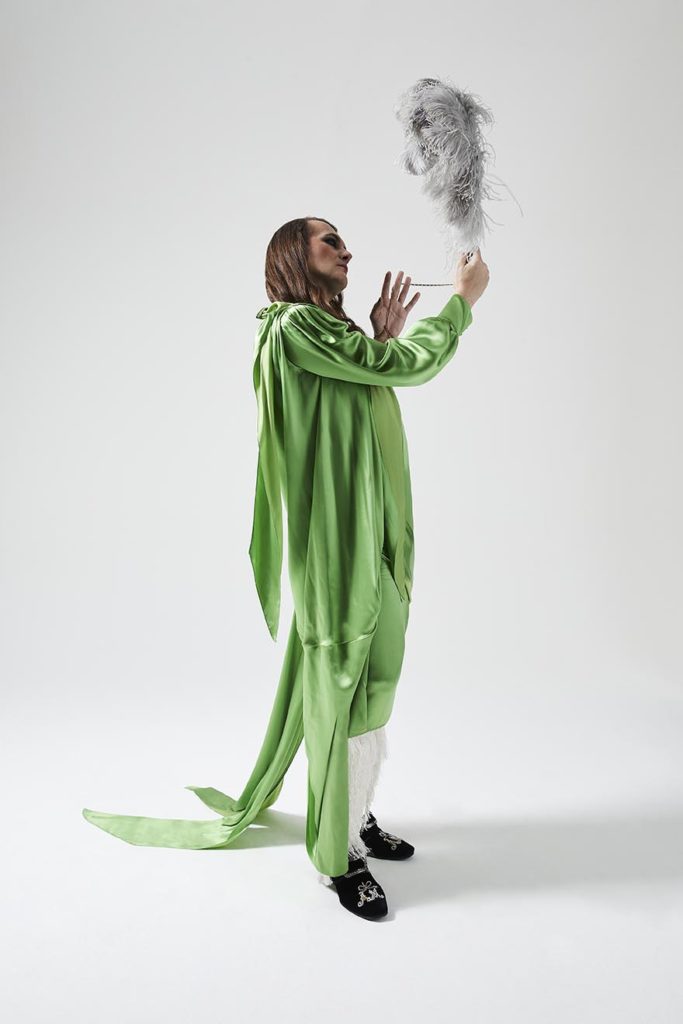 From following his projects and career, feeling his charming presence at some familiar exhibition’s openings, I had the great chance to interview Milovan Farronato – curator of the Italian Pavilion at the upcoming 58th Venice Biennale – ending in a conversation while helping him getting dressed during the portrait series we shot with Tassili Calatroni.
From following his projects and career, feeling his charming presence at some familiar exhibition’s openings, I had the great chance to interview Milovan Farronato – curator of the Italian Pavilion at the upcoming 58th Venice Biennale – ending in a conversation while helping him getting dressed during the portrait series we shot with Tassili Calatroni.
Martina Alemani: Where did the excitement for contemporary art come from for you? To me it is related to two specific moments I can perfectly remember, almost a decade ago; one was the first time I went to a Massimo De Carlo’s opening. I think it was for a solo show by Piotr Uklański and a collective show (Are You Glad to Be in America?) with works by Jack Goldstein, Glenn Ligon, Robert Longo, Steven Parrino, Richard Prince, Kaari Upson, Marianne Vitale, Nate Lowman. I got obsessed.
Milovan Farronato: To me, it was related to a combination of factors and personal interests that, at a certain point, led me to specialize in contemporary art rather than in other humanistic disciplines. It sort of happened by ekphrasis: before the images, in fact, it was reading about them that really fascinated me. Some intellectuals are truly able to translate the synchronic register of vision into the diachronic register of writing through feverish adjectives and astonishing periphrases: describing a work of art is an essential and important effort, even before interpreting it. Other disciplines, such as theatre, dance and choreography also played a crucial role in my path towards contemporary art. I like to compare the job of curators and choreographers. If you’re asking me about the first exhibition I’ve ever been to, I think it might have been Sensation: Young British artists from the Saatchi Collection curated by Norman Rosenthal and Charles Saatchi. But I’m not sure about that, memory does not always follow the actual chronological order.
Per me è stata più una concatenazione di fattori e di interessi che mi hanno portato a un certo punto a una specializzazione nell’arte contemporanea piuttosto che in altre discipline umanistiche. È un po’ capitato per ekphrasis, prima della visione infatti è stata la lettura a suggestionarmi e la capacità di alcuni intellettuali di tradurre il registro sincronico della visione in quello diacronico della scrittura attraverso febbricitanti aggettivazioni e mirabolanti perifrasi. Descrive re un’opera è un lavoro impor tante e prezioso ancora prima di interpretarla. All’arte con temporanea sono arrivato an che da altre strade: il teatro, la danza, la coreografia. Mi piace paragonare il ruolo di un curatore a quello di un coreografo. Se mi chiedi quali sono le prime mostre che ho visto, penso possa essere stata Sensation: Young British artists from the Saatchi Collection curata da Norman Rosenthal e Charles Saatchi. Ma non ne sono sicuro, la memoria non segue sempre un criterio cronologico.
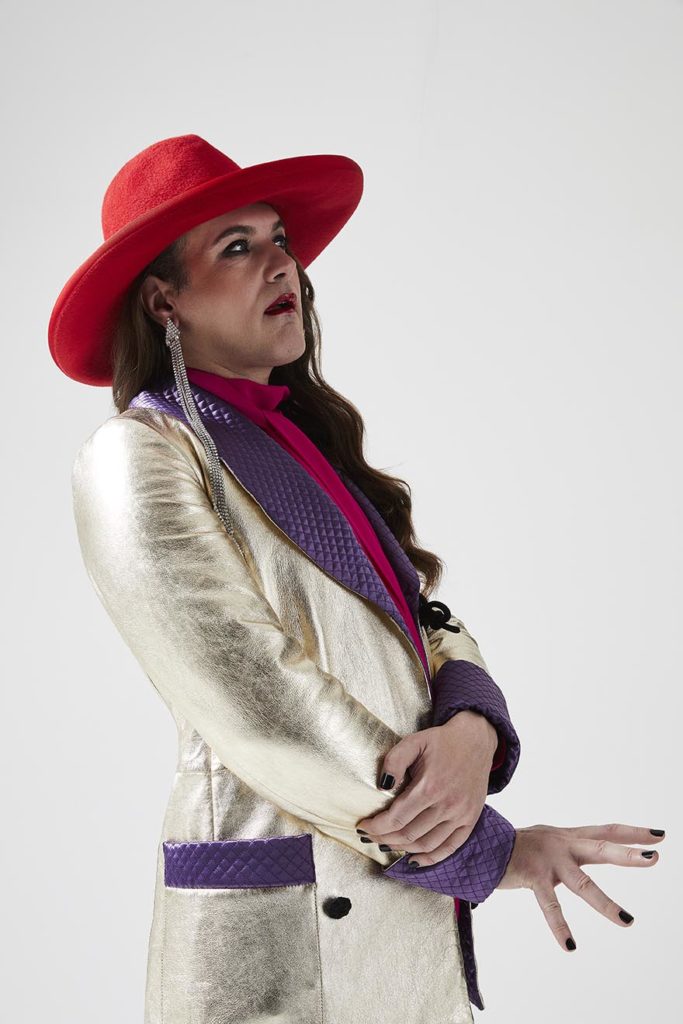 MA: Your curatorial practice is as deep as innovative, do you recognize the reflection of yourself in that? I am also considering the breaking boundaries between different formats experienced by the three artists you chose to represent the Italian Pavilion at the next 58th Venice Biennale opening in May.
MA: Your curatorial practice is as deep as innovative, do you recognize the reflection of yourself in that? I am also considering the breaking boundaries between different formats experienced by the three artists you chose to represent the Italian Pavilion at the next 58th Venice Biennale opening in May.
Enrico David (Ancona,1966 lives and works between London and Berlin dialogues between painting, sculpture and installation; Chiara Fumai’s (Rome,1978— Bari, 2017) works are mainly videos and performances; and Liliana Moro (Milan, 1961 lives and works in Milan) bases her work on drawings, collages, sculptures, theatrical projects and sound and environment installations.
MF: Liliana Moro and Enrico David have a mainly sculptural approach to art; in some ways, Chiara Fumai does the same, through a charismatic presence in her performances and in the environments she creates, like in Moral Exhibition House at Documenta 13. A generous presence, even when it cannot be seen. It leaves traces, shadows and objects to bear witness of its passage: a dress under a Bible above a plinth or a faithful and integral cast of her body above another garment that is now shattered after having first been worn in a different intervention. All the three of them love to experiment and none of them gives up any aspect of their artistic personality. Liliana does not love to perform, but she did it at least twice. She uses bronze, terracotta and ceramics, but does not disdain more ephemeral materials, such as paper, cardboard or foam rubber. And she would certainly never give up on sound and its ability to shape environments. For Chiara, performance comes first; she always appears in her performances, sometimes in good company of hooded figures or ruffled hair ones. However, also sound, embroidery, installation, video and, at the end of her life, even painting are important parts of her art. In Enrico’s work, all media are smoothly blended: there is no before and no after, almost like in a solemn, harmonic composition. In all the three of them, authenticity goes hand in hand with autography.
Liliana Moro ed Enrico David hanno un approccio principalmente scultoreo all’arte e, in qualche modo, così come Chiara Fumai, attraverso la presenza carismatica nelle performance e negli ambienti che costruisce, come in The Moral Exhibition House a Documenta 13. Una presenza sempre generosa anche quando non si manifesta, ma abbandona tracce, ombre, resti a testimoniare il suo passaggio: un vestito schiacciato sotto una Bibbia al di sopra di un plinto o un calco fedele e integrale del suo corpo al di sopra di un altro indumento ora frantumato e prima indossato in un altro intervento. Tutti e tre amano sperimenta re e non rinunciano a nessun aspetto del loro io creativo. Liliana non ama performare, ma lo ha fatto almeno due volte. Usa il bronzo, la terracotta e la ceramica, ma non disdegna tutti quei materiali più effimeri come la carta, il cartone o la gommapiuma. E di certo non rinuncerebbe mai al suo no e alla sua capacità di scolpire gli ambienti. Per Chiara in primis viene la performance, sempre rigorosamente eseguita da lei, magari in gradevole compagnia di alcune figure incappucciate o dai capelli arruffati, ma poi anche il sonoro, il ricamo, l’installazione, il video e, in conclusione della sua vita, anche la pittura. In Enrico tutti i mezzi si me scolano amabilmente senza un prima e un dopo quasi in una solenne, armonica composizione. In tutti e tre l’autenticità coincide, si sposa con l’autografia.
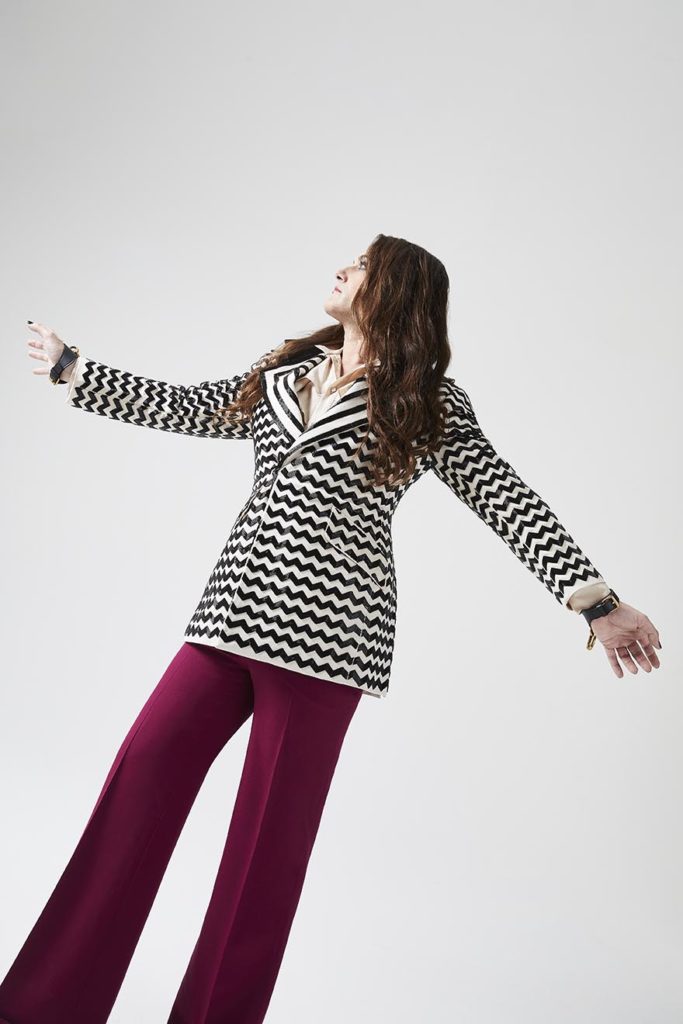 MA: On the other hand, how do artists usually represent you and your personality in their works?
MA: On the other hand, how do artists usually represent you and your personality in their works?
MF: Roberto Cuoghi started, and Runa Islam followed. Both of the times I offered my face for a portrait. Roberto ‘mistreated’ me: in fact, it was part of a series of photographs in which faces and profiles of curators and collectors he had worked with – and might have had mixed feelings about – had indeed been assaulted. My portrait came as a goodness and a dialogue to the one of Nicoletta Fiorucci. I had just started curating her collection (the Fiorucci Art Trust wasn’t born yet) when she fearlessly asked for this kind of portrait. Roberto wanted to include me, and we were both turned into headless daffodils. I’ll explain: above the upper jaw, our heads were cut and cat diapers were put around our necks like fleshy petals. Some teeth could still be seen in the lower dental arch, like the most nutrient pistils. Our necks were the flowers’ stalks, and there we were, turned into two creepy daffodils facing each other. Who projects what onto the other one? I think for Roberto it was all about investigating a peculiar and modern relationship like the one between a collector and her curator, a higher goal than us and our presumed or possible vanity. On the other hand, in the film Assault, Runa exposed me to the theory of colors. My extremely light-skinned face was constantly manifested to the primary colors, lit by powerful spotlights in front of me. When red, green and blue were lit at the same time, I stopped suffering because the white they generated erased my physiognomic traits and therefore also my overexposure. I remember a reassuring feeling when green invaded my field of vision. In the Volcano Extravaganza days, stage and backstage tend to be the same thing. Performance art and ephemeral events are the main focus of the festival – though not the only one – and that is why collaborations between artists often take over, and each one becomes involved in other artists’ performances. This happens to me too, of course, so I had to dance for Cecilia Bengolea, to take part to Alex Cecchetti’s whale chorus or to play a sinister character in Danny McDonald’s unpublished play, to name a few. Stromboli and its informal and unconventional context are likely to have contributed to the birth of other collaborations and works. So, I became life make-up artist for a performance by Nick Mauss, part of Frieze Projects, some editions ago. I played a variety of roles in Paulina Olowska’s performances, such as Lucinda Bear in her tribute remake of The Mother An Unsavoury Play in Two Acts and an Epilogue, produced and exhibited at the Tate Modern. I have also played an usher for her Slavic Goddesses, that time at Museo del Novecento. It is interesting when roles are reversed and suddenly artists are the ones taking care of us curators.
Roberto Cuoghi ha iniziato e poi Runa Islam ha seguito. In entrambi i casi ho offerto il mio volto per un loro ritratto. Per Roberto si è trattato di ‘maltrattarmi’ (era parte di una serie di opere fotografiche fatte per l’appunto aggredendo il volto o il profilo di alcuni curatori e collezionisti con cui aveva lavorato e per i quali, forse, aveva manifestato sentimenti altalenanti). Nel mio caso sono subentrato in virtù e in dialogo con l’altrettanto vituperato ritratto di Ni coletta Fiorucci. Lei, con cui da poco avevo inizia to a collaborare come curatore della sua collezione (all’epoca il Fiorucci Art Trust non era ancora nato) si era avventurata nella richiesta temeraria di questa tipologia di ritratto. Una commissione per la quale Roberto ha voluto introdurre anche me trasformando entrambi in due narcisi decollati. Mi spiego meglio, la testa al di sopra della mandibola è stata rimossa, intorno al collo pannolini da gatto valevano come carnosi petali del fiore, qualche dente come il più nutriente pistillo spuntava ancora nell’arcata dentale inferiore. Il collo lo stelo del fiore ed eccoci trasformati in due inquietanti narcisi che si fronteggiano. Chi proietta cosa nell’altro? Credo che per Roberto si sia trattato di investigare un rapporto particolare e attuale come quello tra un collezionista e il suo curatore, al di là di noi e della nostra presunta o possibile vanità. Runa, invece, nel film Assault mi ha esposto alla teoria dei colori. Il mio volto di carnagione estremamente chiara veniva costantemente esposto ai colori primari accesi da potenti riflettori che avevo di fronte. Quando il rosso, il verde e il blu si accendevano contemporaneamente smettevo di soffrire perché il bianco che generavano cancellava i miei tratti fisionomici e quindi anche la mia sovraesposizione. Ricordo una rassicurante sensazione quando il verde invadeva il mio campo visivo. Durante i giorni di Volcano Extravaganza, stage e backstage tendono a coincidere. Essendo un festival dedicato principalmente, ma non esclusivamente, alla performance e agli eventi effimeri, spesso la collaborazione tra gli artisti prende il sopravvento e ognuno diventa materiale per l’altro. Questo capita ovviamente anche a me, per cui ho dovuto danzare per Cecilia Bangolea, partecipare al coro di balene di Alex Cecchetti o impersonare un sinistro carattere nella play ine dita di Danny McDonald, per citarne alcuni. Probabilmente è proprio da Stromboli e da questo contesto, così informale e anticonvenzionale, che altre collaborazione o proposte sono emerse. E quindi per Nick Mauss sono diventato il life ma ke-up artist per una sua performance, parte dei Frieze Project di qualche edizione fa. Con Paulina Olowska ho svolto vari ruoli, sempre perfora tivi, impersonando Lucida Bear nel suo remake omaggio The Mother An Unsavoury Play in Two Acts and an Epilogue prodotto ed esposto alla Tate Modern. E poi ancora sono stato, sempre per lei, questa volta al Museo del Novecento, un guardiano per le sue Slavic Goddesses. E’ interessante quando i ruoli si invertono e improvvisamente sono gli artisti a prendersi cura di noi curatori.
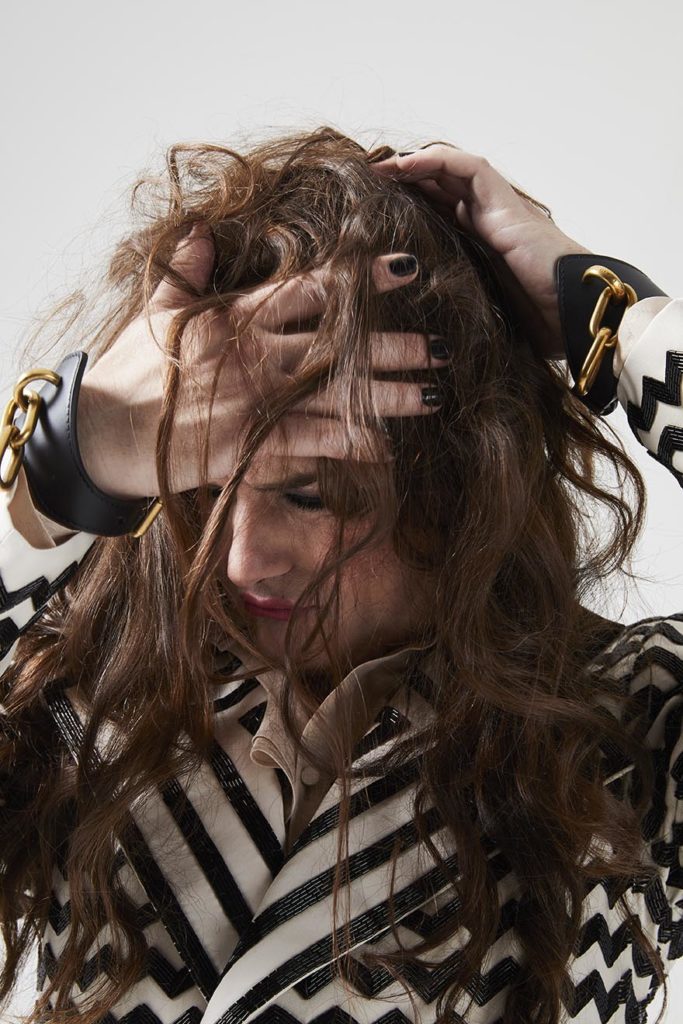 MA: Where did the fascination for Chiara Fumai come from? The representation is iconic, after having worked together closely over the years.
MA: Where did the fascination for Chiara Fumai come from? The representation is iconic, after having worked together closely over the years.
MF: I met Chiara Fumai when I was curator at the Young Artists’ Archive of Viafarini, she came to show me her portfolio. I was instantly amazed by that elegant mix of reality and fiction in her work. Shades of a single self, coexisting and combining, supporting each other. It was hard to understand where fiction ended and reality started. Skillful artifices and uninhibited declarations of intent. I immediately recommended her for a column I was following at the time, and from that moment on we became companions in our journey. With the Fiorucci Art Trust, we supported her participation at Documenta (13), and our collaboration has not stopped ever since. Each season she has added something more, up to now, up to Venice and to the Italian Pavilion. Of course, I will miss her presence, but her work will speak for itself.
Ho incontrato Chiara Fumai quando ero curatore dell’archivio per giovani artisti di Viafarini, è venuta a mostrarmi il suo portfolio e sono rima sto immediatamente folgorato da quell’elegante mélange di realtà e finzione. Tante sfaccettature di un unico io che coesistevano e che si manifestavano l’una a supporto dell’altra. Difficile comprendere quando la finzione finiva e iniziava la realtà. Sapienti artifici e disinibite dichiarazioni d’intenti. L’ho subito segnalata per una rubrica che seguivo all’epoca e da quel momento siamo diventati compagni di viaggio. Con il Fiorucci Art Trust abbiamo supportato la sua partecipazione a Documenta(13), e il nostro rapporto non si è più interrotto. Ad ogni stagione ha aggiunto un altro tassello, fino a oggi, fino a Venezia e al Paglione Italia. Certo mi mancherà la sua presenza, ma il suo lavoro sarà eloquente.
MA: How did it all start? I’d like to quote a sentence a friend of mine recently said: “She knows something without thinking it”.
MF: Instead she told me: “Play your role. Conceal, don’t declare! Mix it with something else, confessions are not allowed”.
Lei mi disse invece: “Recita il tuo ruolo. Dissimula, non dichiarare! Mischia ad altro, le confessioni non sono permesse”
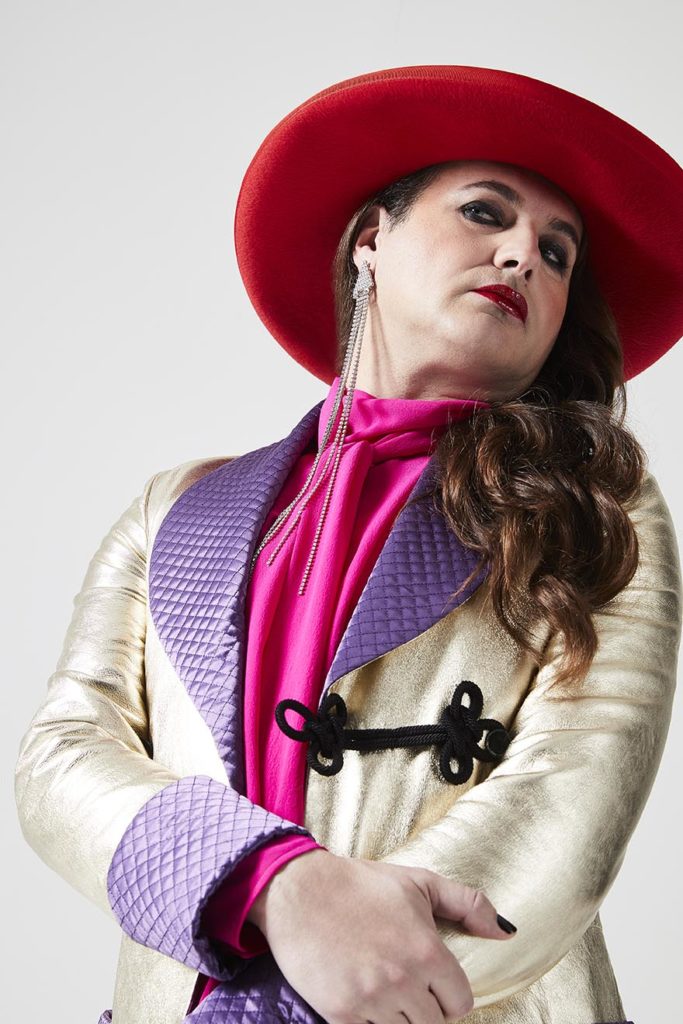 MA: From the start, as Director and Curator of the Fiorucci Art Trust (founded by Nicoletta Fiorucci in 2010 to promote contemporary art, it has had Farronato as Director of the Trust since its inception) based in London you also developed – between many other relevant projects – the artist-led program Volcano Extravaganza on the volcanic island of Stromboli in Italy’s Aeolian Islands. I am interested in what these particular locations mean to you, thinking they perfectly fit your spirit.
MA: From the start, as Director and Curator of the Fiorucci Art Trust (founded by Nicoletta Fiorucci in 2010 to promote contemporary art, it has had Farronato as Director of the Trust since its inception) based in London you also developed – between many other relevant projects – the artist-led program Volcano Extravaganza on the volcanic island of Stromboli in Italy’s Aeolian Islands. I am interested in what these particular locations mean to you, thinking they perfectly fit your spirit.
MF: Between 2008 and 2010, Nicoletta Fiorucci and I organized a series of creative stays on the islands, with artists, designers and thinkers. The uniqueness of the place and of the experience itself led to a spontaneous birth of works and ideas which sometimes turned into important projects. In 2011 we decided to start the Volcano Extravaganza festival to bring some of those ideas back to the place they were conceived in, maintaining an informal atmosphere and a certain degree of improvisation. At first, the festival involved a number of events all throughout summer, now it is shorter and more intense as its actual conception and realization time, it lasts only a few days. In Stromboli, general rehearsal and performance on stage tend to coincide. Since 2017, our project crossed the island’s borders, and its activities were especially significant in Naples: last year, in February, it debuted in Bangladesh, as part of the Dhaka Art Summit, whereas this year it will end in the ancient ruins of Pompei. The festival is a very strong experience. It gave me the chance to see art stripped of its standard protocols, but with a visceral effervescence. I have always been fascinated by the concept of a complete work of art, by the Fluxus community, especially by John Cage, who saw the creative process as more important than the product itself, and considered the actual work as an interaction between artist and public. Unfinished inspires me. I consider most of my texts unfinished. Maybe I’ll end them one day, there in Stromboli, but during winter.
Tra il 2008 e il 2010 Nicoletta Fiorucci e io abbiamo organizzato una serie di soggiorni creativi sull’isola, in compagnia di artisti, designer, pensatori. Dall’unicità del luogo e della circostanza, nascevano spontaneamente opere e riflessioni che a volte si trasformavano in importanti progetti. Nel 2011, spinti dal desiderio di riportare alcune di quelle risposte nel loro luogo nativo, mantenendo l’informalità e lasciando sempre spazio a un certo grado di improvvisazione, abbiamo deciso di iniziare il festival Volcano Extravaganza. Dapprima costellato di eventi nel corso dell’estate, il tempo del concepimento e quello della realizzazione si sono poi condensati e il festival dura oggi solo un breve volgere di albe e tramonti. A Stromboli prova generale e messa in scena tendono a coincidere. Dal 2017, l’iniziativa è apparsa anche al di fuori dell’isola, e in particolare a Napoli; l’anno scorso, a febbraio, ha debuttato in Bangladesh come par te del Dhaka Art Summit, mentre quest’anno si concluderà negli scavi archeologici di Pompei. Il festival è un’esperienza intensa, mi ha dato la
possibilità di guardare l’arte ‘scalza’, con pochi protocolli standard ma con una viscerale effervescenza. Sono sempre stato attirato dal concetto di opera totale, dal movimento Fluxus, e in particolare da John Cage, che prediligeva il processo creativo al prodotto finito e che considerava il lavoro come interazione tra artista e pubblico. L’incompiuto mi stimo la. Considero quasi tutti i miei testi incompiuti. Forse un giorno, proprio a Stromboli, ma d’in verno, li porterò a termine.
MA: And what do you foresee in the upcoming future, as the next art movement? How would you deal with it?
MF: When I was a child, sometimes I was afraid I didn’t have my own path, or that I was only a side character in someone else’s life. This feeling of lack of identity was so intense that my whole self seemed to be falling to pieces. It felt like breaking into a billion of particles and flying away. To feel intact again and hold on to this dimension, I asked those near me to call my name, as if it was the only lashing that could guarantee my existence and presence. I once described a friend of mine about this fear I developed, and she told me some spiritual disciplines considered this sense of fragmentation a sign of freedom, elevation, some sort of beyond-human evolution. Being called by name helped me stay on Earth, because I was afraid to fly, and I did not know it could be a gift. We live in a time of splintering: reality has multiple facets and shades defining it. Contemporary times are marked by transience – which I see as stimulating – and that is why I cannot prefigure one or more single trends defining the future. I prefer fragmentation, for now.
Da bambino mi accadeva di temere di non avere un mio percorso o di essere solo un personaggio di contorno nella vita di altri. Questa sorta di sensazione di mancanza di identità, era talmente drammatica da trasformarsi a volte in una vera e propria disgrega zione del mio essere. Mi sembrava di frantumarmi in una miriade di particelle e di volare via. Per continuare a sentirmi intatto e anco rato a questa dimensione, chiedevo a chi mi era accanto di chiamare il mio nome. Come se la nominazione fosse l’unica imbracatura che potesse garantire la mia esistenza e la mia presenza. Un giorno raccontai questa paura di volare via ad un’amica e lei mi disse che questa sensazione di dispersione dell’essere e del corpo, venivano considerata secondo alcune discipline spirituali un segno di liberazione, di elevazione, una sorta di evoluzione oltreumana. L’essere chiamato per nome mi serviva per rimanere sulla terra, perché avevo paura di volare, non sapevo potesse essere inteso come un dono. Oggi siamo in un’epoca di parcellizzazione, dove la realtà è molteplice e si definisce attraverso tutte quelle particelle che la compongono. La nostra contemporaneità tende al transito – e considero questa condizione come qualcosa di stimolante – non riesco quindi a prefigura re un futuro che sia definito da una tendenza unica, da un movimento o da dei movimenti. Preferisco la frammentazione, per ora.
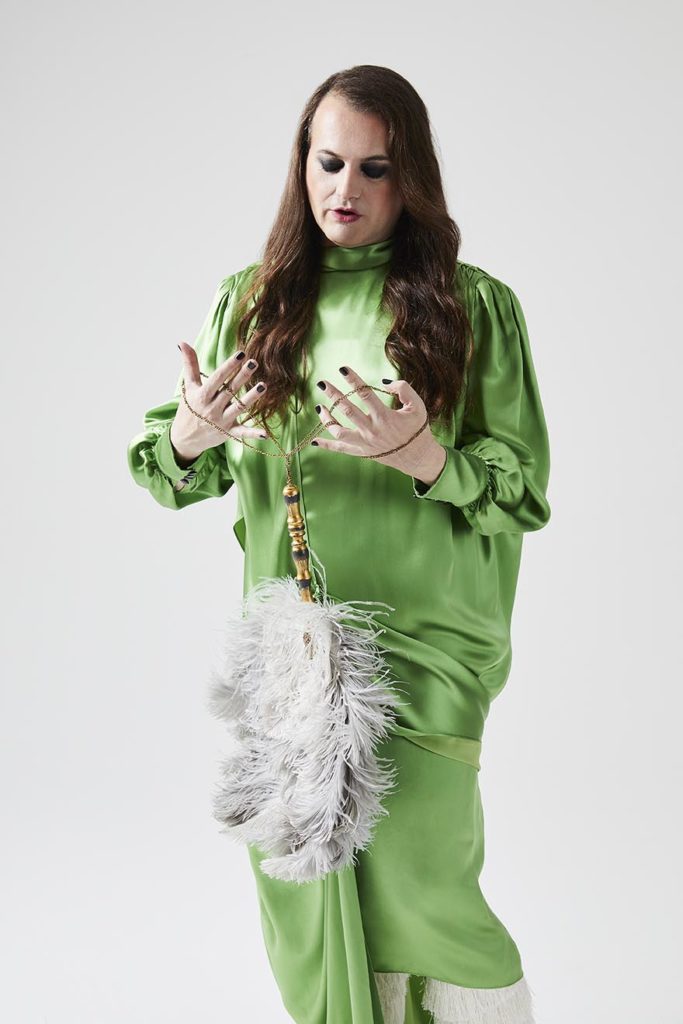 MA: Can you name me three emergent artists to look at?
MA: Can you name me three emergent artists to look at?
MF: Let’s stay in Italy, since this year I will be curating the National Pavilion at the next and upcoming International Art Exhibition of the Venice Biennale. I am still deeply moved about having been nominated for this role, and I want to thank the Directorate-General for Contemporary Art and Architecture and Urban Peripheries, directed by Architect Federica Galloni, who welcomed me warmly and has been supporting me since the start. Among rising artists, I would name Patrizio Di Massimo. In his paintings, a few iconic elements define the abstinence of time and space. Then the young SAGG Napoli, with her lively and fresh feminism, far from everything that has been done before; and Daniele Milvio, who creates a variety of landscapes in his paintings, and manages to make them accessible through amazing and acrobatic displays.
Rimaniamo in Italia visto che quest’anno sono il curatore del Padiglione nazionale alla prossima, imminente Mostra Internazionale d’Arte della Biennale di Venezia, per la cui nomina sono ancora molto emozionato e ringrazio la Direzione Generale Arte e Architettura con temporanee e Periferie (DGAAP) urbane diretta dall’architetto Federica Galloni che mi ha accolto con entusiasmo e che, sin dall’inizio del mio incarico, mi appoggia e supporta. Tra gli artisti emergenti, segnalerei Patrizio Di Massimo e i suoi dipinti in cui l’astensione del tempo e dello spazio viene definito da pochi ma emblematici elementi; la giovanissima SAGG Napoli e il suo esuberante femminismo non riconducibile a traiettorie già percorse; e Daniele Milvio che amabilmente compone paesaggi pittorici sempre diversi e riesce a renderli accessibili attraverso mirabolanti e acrobatici display.
MA: And three words – I think I might be a little obsessed with number three, especially in this interview – one to describe the project, one for the title and one for the artworks exhibited at your Italian Pavilion?
MF: The project is labyrinthine, the title is an anastrophe and the artworks are generous.
Il progetto è labirintico, il titolo è un’anastrofe e le opere sono generose.
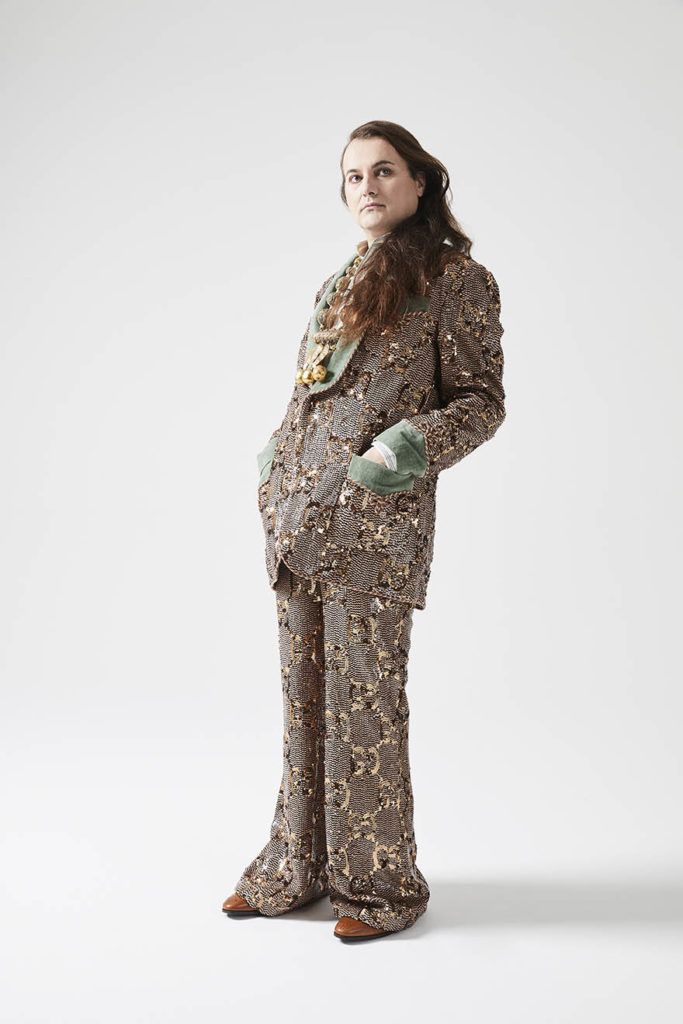 MA: Speaking about the photography (by Tassili Calatroni) accompanying this interview, we chose a series of portraits, where you dress looks from the last Gucci’s catwalk. How do you feel about fashion tendencies? Are you enthusiastic about some particular brands? Fashion phenomenon Virgil Abloh (Founder of OffWhite and Creative Director of Louis Vuitton), for example, is bringing streetwear culture and attitude into the gallery context (he recently did a show with Takashi Murakami at Gagosian).
MA: Speaking about the photography (by Tassili Calatroni) accompanying this interview, we chose a series of portraits, where you dress looks from the last Gucci’s catwalk. How do you feel about fashion tendencies? Are you enthusiastic about some particular brands? Fashion phenomenon Virgil Abloh (Founder of OffWhite and Creative Director of Louis Vuitton), for example, is bringing streetwear culture and attitude into the gallery context (he recently did a show with Takashi Murakami at Gagosian).
MF: I like the fact that Gucci only does two fashion shows a year and that in both of them the collection includes and (for some aspects) blends men and women. I feel comfortable in their outfits because they allow me to reconcile important aspects of my personality. As a curator, I have often worked with fashion designers, such as Osman Yousefzada, during the last edition of Volcano Extravaganza. I have worked, and I am friends, with Lucy Mackenzie, an artist who created the fashion label Atelier E.B. with designer Beca Lipscombe. The collective has recently showed at the Serpentine Gallery with Passer-by, an exhibition/show room that analysed the relationship between art, design, trade and display and described some milestones in the history of representation of fashion and art. It can currently be seen in Paris at Lafayette Anticipations. Not to be missed.
Mi piace il fatto che Gucci faccia solo due sfilate all’anno e che in entrambe il repertorio includa e confonda (per certi versi) uomo e donna. Mi trovo a mio agio nei loro outfit per ché mi riconcilio con alcuni aspetti importanti della mia personalità. Come curatore mi è capitato spesso di collaborare con designer di moda, come per esempio durante l’ultima edizione di Volcano Extravaganza alla quale ha partecipato anche Osman Yousefzada. Ho lavorato e sono amico anche dell’artista Lucy McKenzie che qualche anno fa ha creato, insieme alla designer Beca Lipscombe, un fashion label: Atelier E.B. Il collettivo ha recentemente esposto alla Serpentine Gallery con Passer-by, una mostra/show room che analizzava il rapporto tra arte, design, commercio e display e che raccontava alcune tappe fondamentali della storia della rappresentazione di moda e arte. Attualmente è in visione nella sua seconda tappa espositiva a Parigi presso Lafayette Anticipations. Da non perdere.
